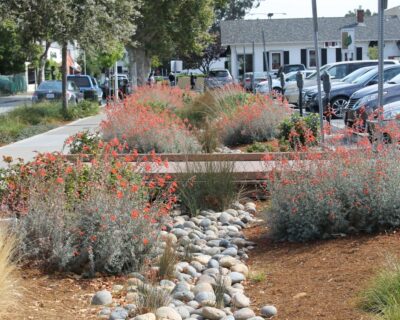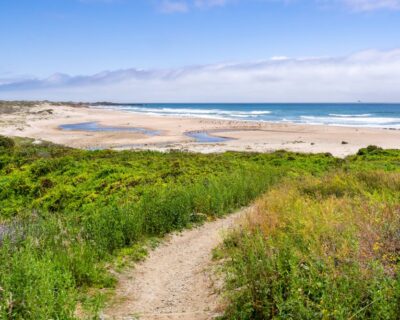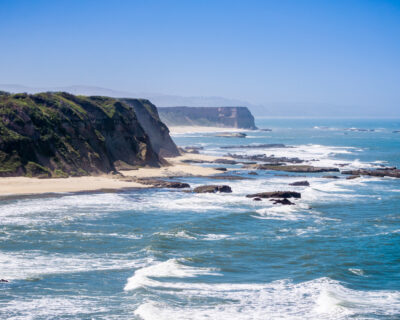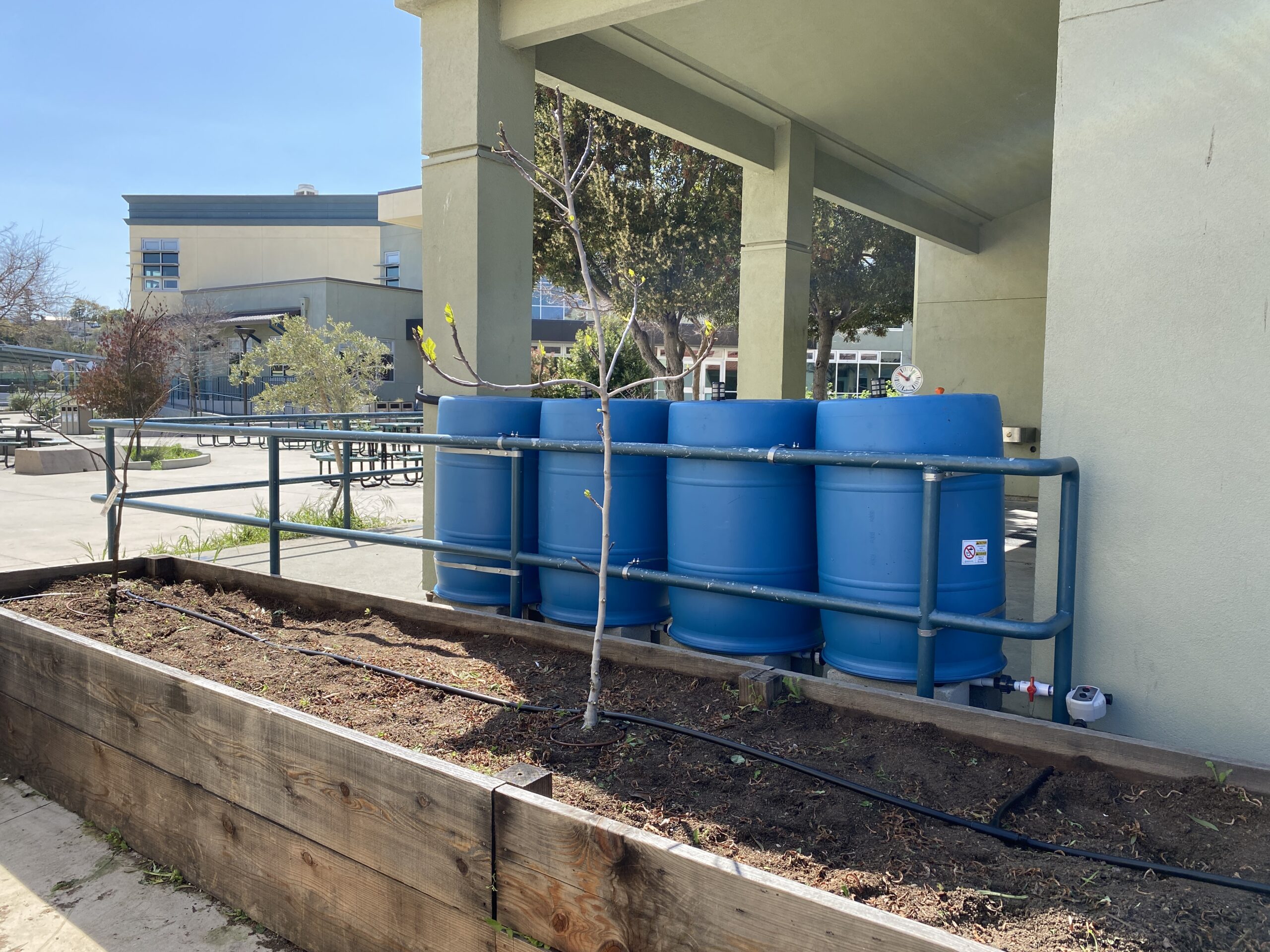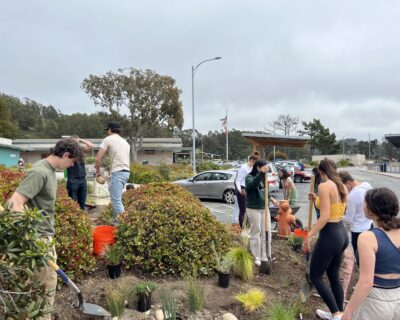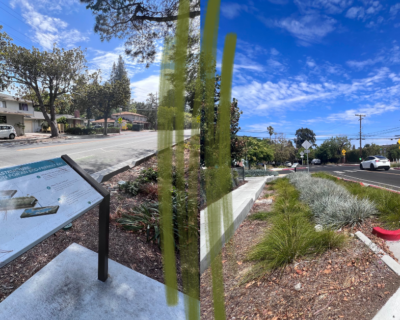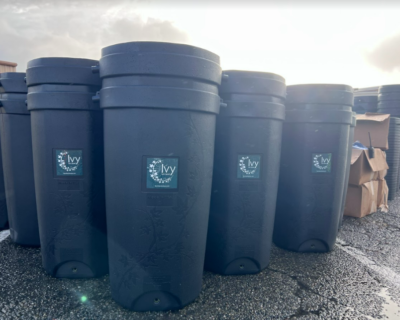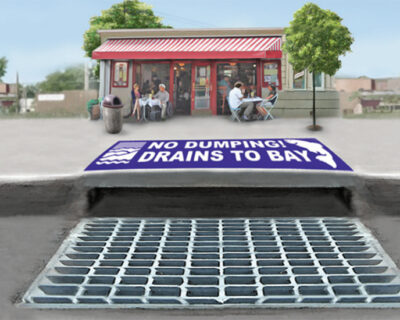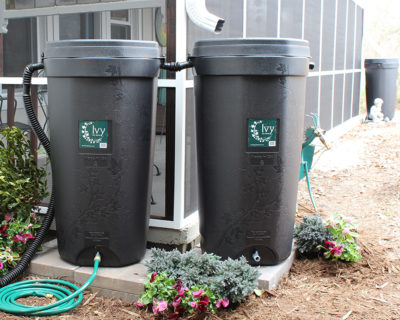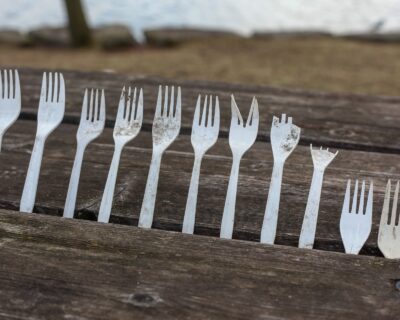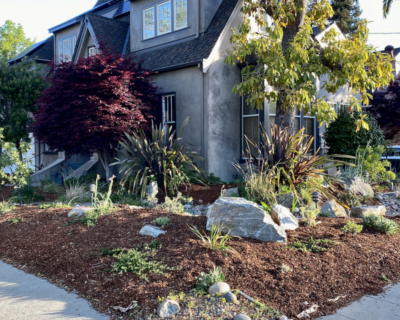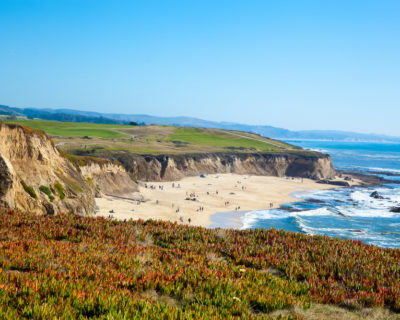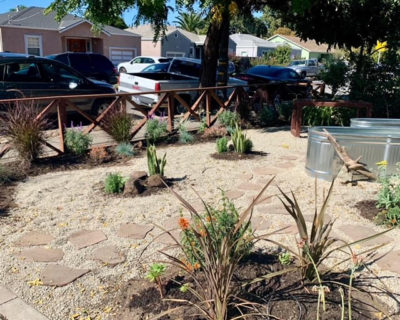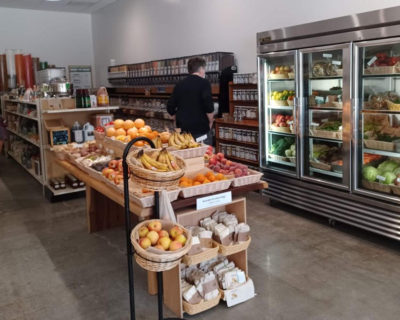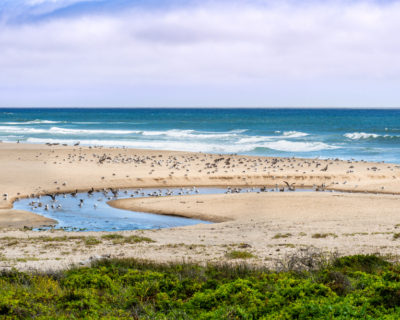Water resources are crucial to San Mateo County. Water provides recreation to San Mateo County residents and visitors. It is also home to many types of wildlife, including endangered species like silver salmon, steelhead trout, and California red-legged frog.
Protecting our water resources is everyone’s responsibility. Each day, a variety of toxic pollutants are washed from streets and parking lots into storm drains. The storm drains prevent flooding by sending this run-off to the local creeks and then the Bay or Ocean, but this water is NOT treated. Therefore, pollutants ultimately reach the Bay or Ocean as well. Through the success of the city and county stormwater programs in the Bay Area, the water quality of the Bay will improve. With improved water quality, the marine ecosystem will become healthier. A healthier marine ecosystem will enhance the quality of life for all residents around the Bay and in the Ocean.
Read below to learn more about water pollution prevention.
What is Stormwater?
Stormwater runoff is any water, either through rain, sprinklers, or irrigation of yards/gardens, that falls and is transported over land and pavement into local waterbodies through the storm drain system. Any water that flows into a storm drain is deposited into creeks, the Bay, or the Pacific Ocean without treatment.
What is Urban Runoff?
Urban runoff is stormwater that picks up various urban pollutants: automobile pollutants, pesticides, fertilizers, trash, soap, and any other material or chemical, on its way into a storm drain or waterway. This happens because impervious surfaces like parking lots, roads, buildings, pavement, and compacted soil, do not allow water to infiltrate into the ground. Once urban runoff enters the storm drain, it goes directly into the nearest body of water.
Where does pollution come from?
Pollution can be generated from various different types of items and activities that we do in and around our homes. Below is a short list of some of the most common ones.
- Mercury from broken fluorescent lamps, old batteries, and thermometers
- Litter and trash that is not properly discarded or recycled
- Leaking oil, antifreeze, and gasoline from cars
- Pesticides and herbicides from your home and garden
- Oil from leaking trash containers at restaurants
- Motor oil waste from oil changes on cars, lawn mowers, and small equipment
- Soaps and other chemicals
- Copper dust from auto brake pads
- Rubber tire dust from auto tires
- Leaves and lawn clippings
- Pet waste
Is there a difference between the storm drain and sewer system?
Yes—an important difference. Stormwater and all the pollutants that flow from our homes, parking lots and streets to the gutter into the storm drains discharge directly into our creeks and other water bodies…untreated. Water and pollutants that flow into the sanitary sewer, such as water from our bathtubs and toilet, are sent to wastewater treatment facility before the water is discharged to creeks, the Bay, or Ocean.

What is the history of the development of stormwater systems?
In the late 1800’s and early 1900’s, combined sewers were built to convey and dispose of both sanitary sewage and stormwater. Eventually, local governments began to separate storm flows from wastewater flows and separate sanitary sewer and storm sewer systems replaced combined sewer systems in many areas. Early municipal storm sewer systems were designed to discharge stormwater rapidly, and included such physical elements as curbs, gutters, inlets, storm sewers, roadside ditches, and concrete and grass-lined open channels.
Thinking began to change in the 1960’s and 1970’s with the recognition that efficient stormwater systems also transferred problems downstream. With a need to reduce the rate and volume of these stormwater discharges, many local governments started requiring new developments to construct stormwater detention facilities. In the 1980’s and 1990’s, stormwater quality became a focus of federal regulatory requirements and local governments have had to develop stormwater quality programs in response.
What is a Watershed?
A watershed is the land that water flows over or through on its way to a creek, delta, bay, or ocean. Everyone lives in a watershed, and everything that happens in the watershed affects water quality and habitat quality for fish, birds, and other living things. See the video below to learn more about what a watershed is and explore the various watersheds in San Mateo County here.
What is the Clean Water Act and what does it do?
The objective of the Clean Water Act is “To restore and maintain the chemical, physical and biological integrity of the Nation’s waters.” The Act established the National Pollutant Discharge Elimination System (NPDES) program to regulate discharges, including urban runoff, and stormwater. Industrial facilities, construction sites, and urban areas with more than 100,000 people must control the amount of pollutants entering their storm drain systems.
Industrial facilities and construction sites are regulated by the State Water Resources Control Board through general stormwater permits. Cities and counties are regulated through permits issued by the Regional Water Quality Control Boards.
For San Mateo County: San Francisco Bay Regional Quality Control Board.

